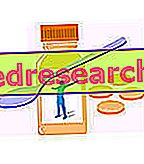BI-EUGLUCON ® a drug based on phenformin hydrochloride and glibenclamide
THERAPEUTIC GROUP: Oral hypoglycemic agents - combined therapy
IndicationsAction mechanismStudies and clinical effectiveness Usage and dosage instructionsWarnings Pregnancy and lactationInteractionsContraindicationsUndesirable effects

Indications BI-EUGLUCON ® - Fenformin + Glibenclamide
BI-EUGLUCON ® is used in the treatment of second type diabetes mellitus, in case of reduced efficacy of sulfonylureas monotherapy and marked insulin resistance.
Mechanism of action BI-EUGLUCON ® - Fenformin + Glibenclamide
The excellent hypoglycemic efficacy of BI-EUGLUCON ® is due to the combination of two active ingredients from complementary action mechanisms.
In fact, while glibenclamide, belonging to the pharmacological category of sulfonylureas, is able to act at the level of the pancreatic beta cell, promoting the endogenous insulin secretion, phenformin, belonging to the biguanide category, acts at the peripheral level, improving sensitivity to the insulin and predisposing insulin-sensitive tissues to better use of glucose.
The synergy between the two active ingredients, allows not only an excellent glycemic control both basal and post-prandial, but also a greater tolerability of the therapy, given the modest doses used.
In addition, the easy way to take it, significantly increases compliance, further optimizing the effectiveness of the medicine.
Both active ingredients, taken orally, are absorbed at the intestinal level and excreted mainly through the urine.
Studies carried out and clinical efficacy
1. SULFANILUREE AND BIGUANIDES INEFFECTIVE IN VASCULAR PROTECTION
The combined therapy between biguanides and sulfonylureas was not able to modulate the potential toxic effects of hyperglycemia on the vascular wall, showing no particular anti-atherogenic effects. The study was carried out in vitro, evaluating the structural changes induced by the drug on the proteoglycans of the vascular muscle cells involved in the development of the atheroma.
2. MONITORING OF COMBINED THERAPY
Italian work that focuses on the study of potential causes of death of patients treated with combined therapy between sulfonylureas and biguanides, in order to exclude possible roles of the active ingredients in these episodes. The absence of statistically significant studies increases the need for controlled clinical trials.
3. GLIBENCLAMIDE AND PHENFORMIN, THERAPEUTIC EFFICIENCY
Treatment of second-type diabetic patients with glibenclamide and phenformin ensured good glycemic control and a reduction in concentrations of more intense glycosylated hemglobin than single therapies. However, the association between glibenclamide and metformin has produced the best results
Method of use and dosage
BI-EUGLUCON ® tablets of 25 mg of phenformin and 2.5 mg of glibenclamide:
the treatment with this medicine should start from the minimum effective dose, equal to ½ tablet per day, to be increased up to a maximum of 3 tablets per day, in case of reduced therapeutic success.
The dosage should be formulated by the doctor in a manner appropriate to what the patient's metabolic and carbohydrate profile is in order to avoid the appearance of unpleasant side effects.
Warnings BI-EUGLUCON ® - Fenformin + Glibenclamide
It is important that BI-EUGLUCON ® therapy be preceded and accompanied by non-pharmacological therapeutic measures such as a balanced diet and constant exercise.
All therapy must always be accompanied by periodic monitoring of glycemic levels, renal and hepatic function, in order to avoid the onset of unpleasant side effects.
For the same reason, the patient must be informed of the possible risks related to the intake of high amounts of the drug, of alcohol, of unbalanced diets so that he can recognize the signs of hypoglycemia or keto acidosis and immediately resort to the shelters.
Treatment with BI-EUGLUCON ® should be suspended in favor of insulin, during surgical procedures, infectious and febrile diseases or traumas in order to always guarantee good glycemic control.
BI-EUGLUCON ® contains lactose, therefore it could be associated with the appearance of unpleasant side effects in patients with lactase deficiency, lactose intolerance or galactose / glucose malabsorption.
PREGNANCY AND BREASTFEEDING
The use of BI-EUGLUCON ® is contraindicated in pregnancy and lactation given the possible side effects on the health of the unborn child and of the suckling related to the use of both active ingredients.
It is therefore preferred to treat gestational diabetes with safer drugs, whose therapeutic activity is well defined
Interactions
The possible interactions must essentially be related to the individual active ingredients contained in BI-EUGLUCON ®
In fact, while the therapeutic action of glibenclamide could be altered by the concomitant intake of dicumarol and derivatives, MAO inhibitors, phenylbutazone and derivatives, chloramphenicol, probenecid, cyclophosphamide, salicylates, adrenals, corticosteroids, oral contraceptives and thiazide diuretics, phenformin could be altered by the intake of acol, glucorticoids, betagonists, diuretics and ACE inhibitors.
It is also important to remember that the administration of iodinated contrast agents could reduce renal function, resulting in a potentially toxic accumulation of phenformin for the patient's health.
Contraindications BI-EUGLUCON ® - Fenformin + Glibenclamide
BI-EUGLUCON ® is contraindicated in patients with ketoacidosic diabetes, coma or diabetic precoma, changes in liver and kidney function, respiratory, cardio-circulatory, dystrophic diseases, acute bleeding, gangrene and alcoholism.
Undesirable effects - Side effects
Therapy with BI-EUGLUCON ® was generally well tolerated with the appearance of clinically insignificant side effects such as nausea, anorexia, gastralgia, vomiting, diarrhea, dermatological reactions, headache and dizziness.
Clinically more relevant side effects have been observed in predisposed patients, such as patients suffering from reduced renal function, where the accumulation of active ingredients could determine the onset of lactacidosis and a serious prognosis.
Cases of hypoglycemia have also been described in debilitated, elderly, alcoholic patients, or in the case of incorrect dosages.
Note
BI-EUGLUCON ® is salable only under medical prescription.



